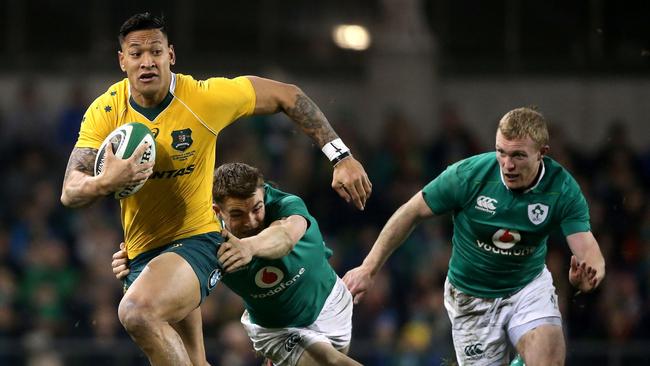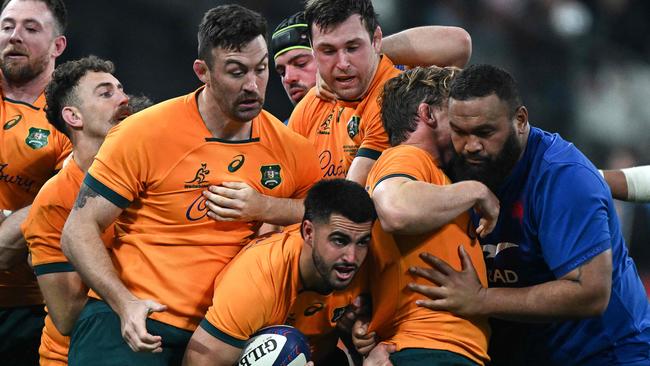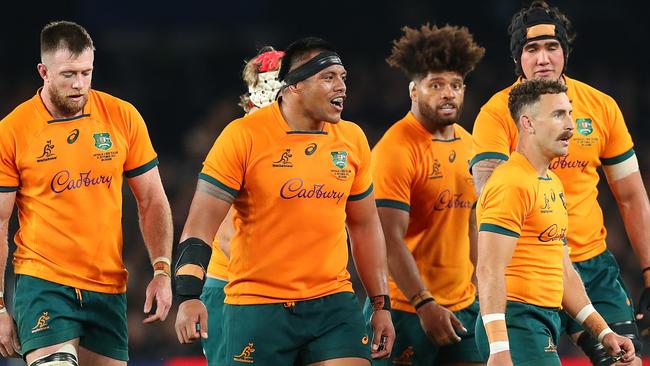World Rugby news: New ‘world league’ 12-team competition could start in 2026
The biggest change to the international game of rugby since it turned professional is upon us, as 12 nations are set to battle it out in the ‘world league’. See all the details here.

Sport
Don't miss out on the headlines from Sport. Followed categories will be added to My News.
World Rugby is finally ready to sign off on the most radical change to the international game since it turned professional more than a quarter of a century ago, signalling a line-in-the-sand moment that could give the Wallabies the financial muscle they need to stop the NRL from poaching its best talent.
Although talks are continuing and no-one has put pen to paper just yet, highly-placed sources have confirmed to News Corp that a revolutionary recommendation to create an elite 12-nation global league is now almost certain to go ahead, kicking off as early as 2026.
While the commercial details and financial numbers are still being finalised, it’s understood that all the major rugby-playing nations are now on board with the concept and a vote has been pencilled in to take place just before this year’s World Cup in France, starting in September.
If the plan - which has been five years in the making - is accepted, the ‘world league’ will be played biannually - in even numbered years to avoid clashing with the odd numbered quadrennial World Cups and British and Irish Lions’ tours.

The 12-nation competition will be made up of six teams from the northern hemisphere and six teams from the southern hemisphere, who will play each other during two separate windows - over three weekends in the southern hemisphere in July then another three in Europe in November.
The best–placed teams from each hemisphere would then meet in a ‘grand final’ - while all the other teams would play off to determine the rankings from third to 12th.
The northern hemisphere will be represented by the Six Nations powerhouses - Ireland, France, Scotland, England, Wales and Italy.
The southern hemisphere will be represented by the four giants currently in the Rugby Championship - Australia, New Zealand, South Africa and Argentina, plus two others, possibly Japan and Fiji.
It’s understood plans to expand the Rugby Championship have been put on hold for the foreseeable future while South Africa’s rumoured bid to join the Six Nations is dead in the water now that both competitions have effectively been ring fenced. The Bledisloe Cup between the Wallabies and All Blacks is also protected.

None of the results from matches in the Six Nations and Rugby Championship will have a bearing on the league, because the placings will be decided only by the crossover matches played in July and November.
That leaves open the possibility for emerging teams to qualify for the league via a proposed second tier, without disrupting the highly-lucrative established competitions.
First proposed in 2018, the idea was initially rejected because Europe’s traditional powers were opposed to promotion and relegation but the tweaks to the model, and the impact of the pandemic on the game’s bottom line, have forced a rethink.
The early projections are that the league will be a massive financial boon for the code because every match will count for something, although it will likely sound the death knell for most, but not all, single-team inbound tours.
So instead of the Eddie Jones-coached Wallabies hosting England for a three match tour in July, for example, Australia might instead host England, Ireland and Italy for one match each, then play France, Scotland and Wales away from home in November.





